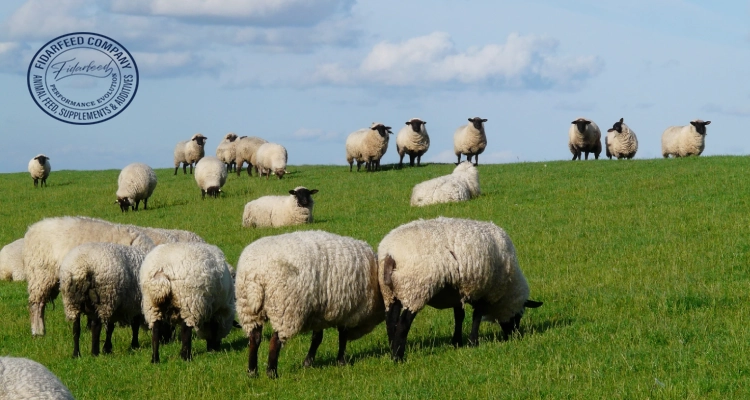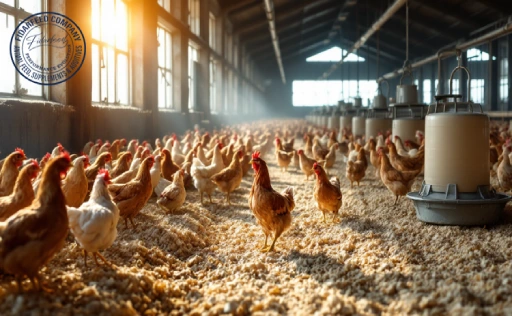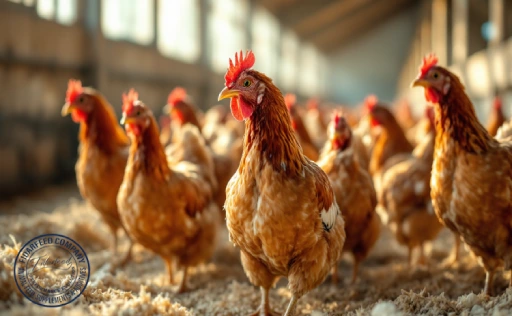
Sheep Farming for Beginners isn’t just for rural landowners anymore—it’s for anyone seeking a fulfilling, sustainable, and potentially profitable lifestyle. Whether you’re a hobby farmer with a few acres, a livestock entrepreneur, or an industry veteran looking to diversify, this guide will walk you through everything from selecting breeds to daily care and making a profit. With practical advice, real-world examples, and scientific insights, we’ll help you build your sheep farming journey step-by-step. Let’s get started.
Why Choose Sheep Farming? Benefits for New and Experienced Breeders
Raising sheep offers a unique blend of simplicity and reward. Unlike cattle, sheep are relatively low-maintenance and require less space, making them perfect for both beginners and small-scale operations. They’re incredibly versatile animals—providing meat (lamb and mutton), milk, and wool—and can thrive in a variety of climates.
Learn more about: TMR Silage Animal Feed
Experienced breeders appreciate the quick return on investment. For example, lambs reach market weight in as little as six to eight months. Additionally, sheep have a gentle temperament, making them easier to handle compared to other livestock. For those focused on sustainability, sheep contribute positively to pasture management and weed control.
How to Get Started with Sheep Farming: First Steps for Beginners
Starting your sheep farming journey begins with planning, education, and preparation. First, evaluate your land: Do you have enough grazing area? Sheep typically require about 0.5 to 1 acre per 5–6 ewes depending on forage quality.
Next, learn the local regulations related to livestock keeping, such as zoning, tagging, and movement laws. You’ll also need to establish a relationship with a local veterinarian, feed supplier, and possibly a livestock association.
Learn more about: The Essential Guide: How Do Sheep Help Farmers?
Before bringing any animals home, invest in basic infrastructure—shelter, fencing, feeding equipment, and clean water systems. And most importantly, start small. Managing 5–10 ewes in your first season is a great way to gain hands-on experience without being overwhelmed.

Choosing the Right Sheep Breed: What Works Best for Your Farm?
Not all sheep are created equal. The right breed depends on your farming goals—are you raising sheep for meat, wool, milk, or all three?
-
Meat breeds (e.g., Dorper, Suffolk) grow quickly and are ideal for high-yield meat production.
-
Wool breeds (e.g., Merino, Romney) produce high-quality fleece but require regular shearing and more intensive care.
Learn more about: How to Treat Ringworm in Sheep and Lambs: A Complete Guide
-
Dairy breeds (e.g., East Friesian) are excellent for cheese and milk products.
For beginners, Katahdin or Dorper sheep are popular due to their parasite resistance and hair coat (no shearing needed). Talk to other breeders in your area to see what works well in your climate and market.
Setting Up Your Farm: Land, Fencing, and Shelter Essentials
Sheep need secure, predator-proof fencing—at least 4 feet high. Woven wire or electric fencing is recommended. Unlike goats, sheep are less likely to climb, but they can slip through gaps if fencing is inadequate.
Learn more about: The Complete Guide: How to Run a Successful Sheep Farm
Shelter can be simple—a three-sided shed or barn works in most climates. Good ventilation is essential, as moisture buildup can cause respiratory issues. Bedding (like straw) helps insulate and keep the flock dry.
Lastly, ensure pasture rotation is possible. Overgrazing weakens the soil and leads to parasite buildup. Consider dividing your land into paddocks and rotating sheep every few weeks.

Feeding and Nutrition: What Do Sheep Really Need to Stay Healthy?
Sheep are natural grazers and thrive on high-quality forage. Good pasture with a mix of grasses and legumes is ideal. In winter or drought conditions, supplement with hay or silage.
Ewes in late pregnancy and lactation, as well as growing lambs, need extra nutrition. Grain supplements (like corn or barley) can help but must be introduced gradually to avoid digestive upset.
Learn more about: How to Control Internal Parasites in Sheep: Best Practices
Access to clean, fresh water is non-negotiable. Also, provide salt and mineral blocks specifically formulated for sheep—cattle minerals can be toxic due to high copper content.
Sheep Health and Disease Prevention: A Beginner’s Guide to Flock Care
Healthy sheep are active, alert, and have clear eyes. But they can suffer from diseases like foot rot, internal parasites (worms), and pneumonia. Establish a deworming schedule based on fecal egg counts and regional advice.
Vaccinations are essential. For instance, CDT (Clostridium perfringens types C & D and Tetanus) is a core vaccine. Hoof trimming and regular health checks prevent lameness and infections.
Learn more about: Dorper Sheep Farming: Producing High-Quality Meat for Maximum Profit
Keep new sheep quarantined for 2–3 weeks before introducing them to your flock to prevent disease transmission.

Breeding and Lambing Basics: How to Grow Your Flock Responsibly
Breeding season typically starts in late summer or fall. One healthy ram can service 25–35 ewes. Gestation lasts around 147 days, meaning lambing usually occurs in spring.
Learn more about: Solving Rumen Health Problems in Sheep with Probiotics
Provide expectant ewes with extra nutrition and a calm, clean environment. Most ewes lamb without help, but be prepared with basic supplies (iodine, towels, lambing pens) and vet contacts.
Newborn lambs should nurse within 30 minutes for colostrum. Watch for issues like hypothermia or rejection and be ready to assist if needed.
Daily and Seasonal Sheep Farming Tasks: What to Expect Throughout the Year
Your daily routine includes feeding, checking water, observing health, and maintaining fences. Weekly tasks might involve hoof checks or moving to a new paddock. Seasonal tasks include shearing (for wool breeds), lambing assistance, and vaccinations.
Having a farm calendar helps you stay on track and anticipate busy periods, like lambing or market preparation. Organization is key to a smooth operation.

Profiting from Your Flock: Meat, Wool, Milk, and More
There are several income streams in sheep farming:
-
Meat: Sell lambs directly to consumers or through livestock auctions.
-
Wool: Although less lucrative in some markets, high-quality fleece can be sold to specialty buyers.
-
Milk: Sheep milk is highly valued in cheese production and niche markets.
Learn more about: The Ultimate Guide to Sheep Farming Equipment
Other opportunities include manure composting, breeding stock sales, and agritourism (like sheep-shearing events or farm tours). Know your local market and adapt your business accordingly.
Common Mistakes in Sheep Farming—and How to Avoid Them
Many beginners make similar mistakes: overstocking land, poor fencing, neglecting parasite control, or failing to budget properly.
Learn more about: Mitigating Heat Stress in Sheep: Practical Solutions
Avoid emotional purchases—don’t buy sheep just because they look cute. Do your homework, build a support network, and track your costs. Mistakes are part of learning, but informed planning minimizes setbacks.

Sustainable Sheep Farming: Tips for Eco-Friendly Practices
Rotational grazing not only improves pasture health but also reduces parasite loads. Compost manure to enhance soil without chemical fertilizers. Use natural pest control methods and avoid unnecessary antibiotic use.
Learn more about: Suffolk Sheep: Unlocking Success in Meat Sheep Farming
Consider using solar-powered electric fencing, rainwater collection systems, and multi-species grazing with cattle or poultry to improve land use efficiency.
Resources and Tools Every Beginner Sheep Farmer Should Know
Knowledge is your greatest asset. Join local sheep breeder associations, attend workshops, or take online courses. Books like Storey’s Guide to Raising Sheep or platforms like The Sheep Site, and NADIS (UK) offer credible health updates and breeding tips.
Learn more about: Ideal Feeding Program for Sheep at Different Growth Stages
Connect with experienced farmers through Facebook groups, Reddit forums, or YouTube channels dedicated to small ruminant care. You’re never alone in this journey.

Conclusion
Sheep Farming for Beginners doesn’t have to be overwhelming. With the right knowledge, tools, and mindset, anyone can raise a healthy, productive flock and build a sustainable source of income. From choosing your breed to selling your products, this guide is a roadmap designed to get you started on the right hoof.
Whether you’re just starting out or looking to refine your skills, our complete guide to Sheep Farming for Beginners offers the practical steps and expert advice you need to succeed. If you’ve found this guide helpful—or if you have questions, tips, or stories of your own—we’d love to hear from you in the comments. Share your journey and connect with others in the growing community of sheep breeders.



